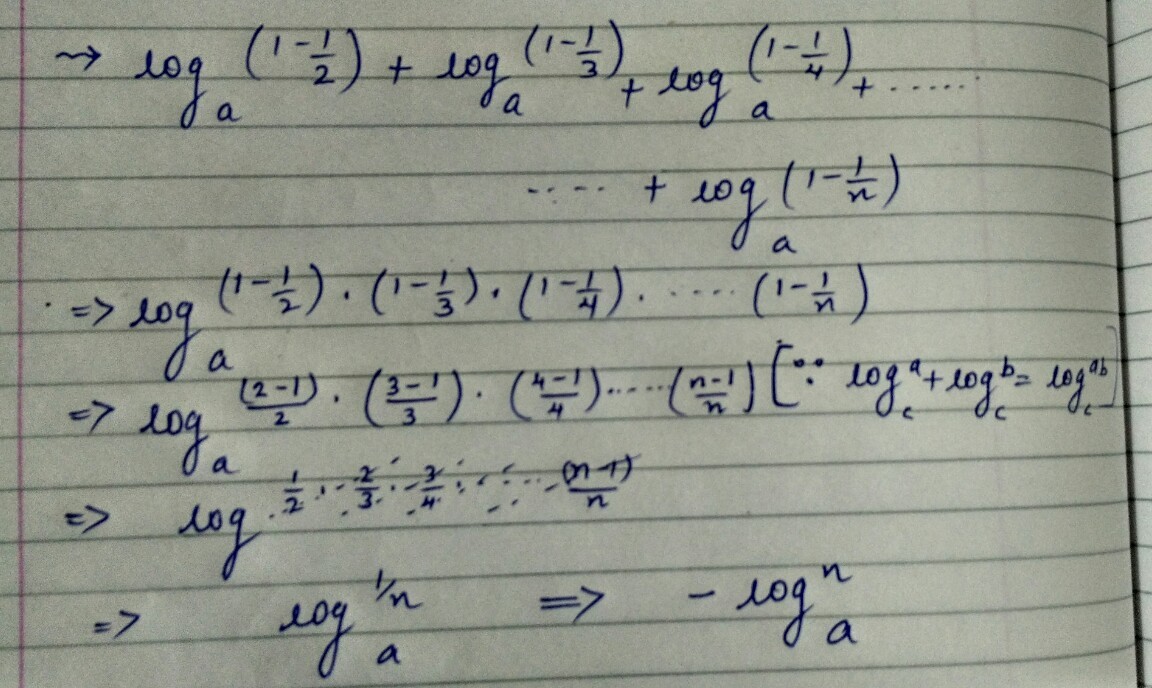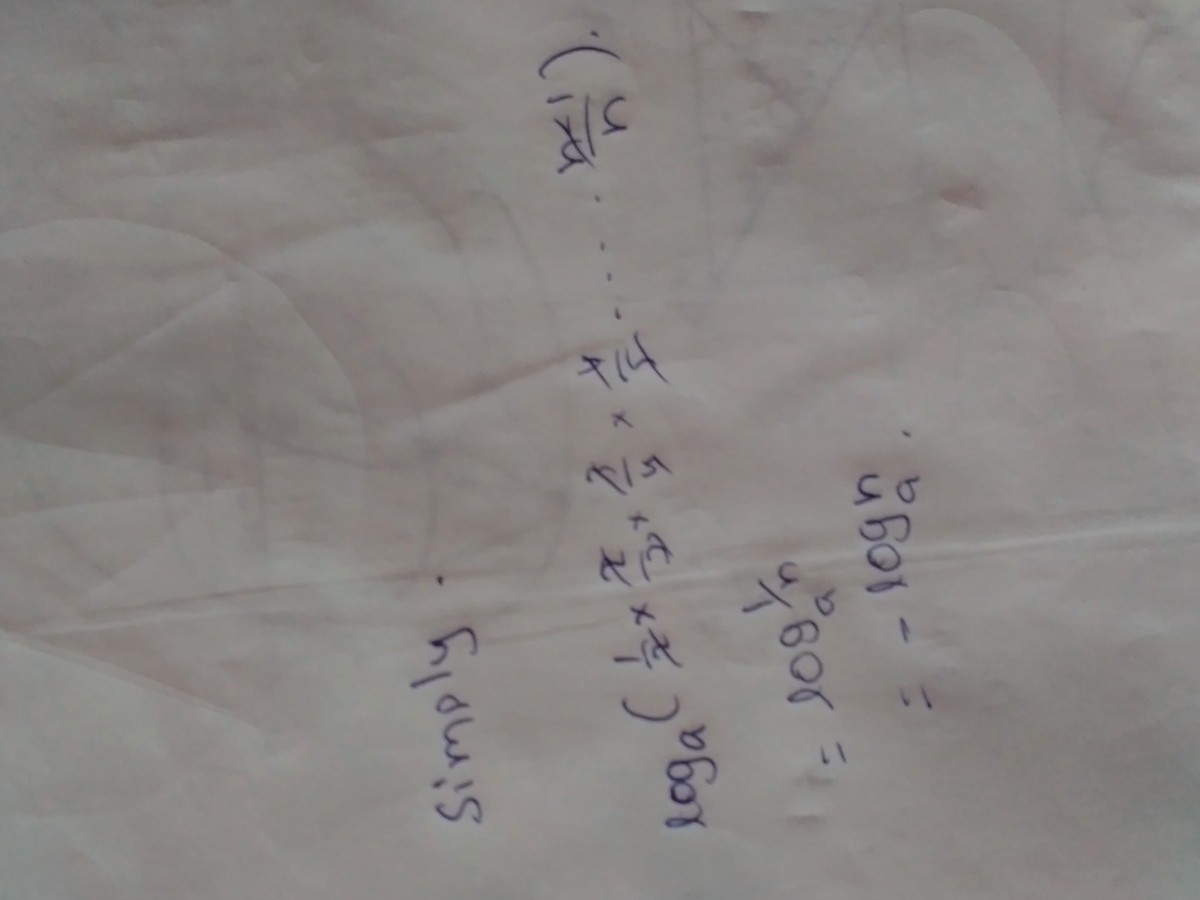Logarithms' challenger #2
Find the value of: lo g a ( 1 − 2 1 ) + lo g a ( 1 − 3 1 ) + lo g a ( 1 − 4 1 ) . . . + lo g a ( 1 − n 1 )
This problem is a part of this set .
This section requires Javascript.
You are seeing this because something didn't load right. We suggest you, (a) try
refreshing the page, (b) enabling javascript if it is disabled on your browser and,
finally, (c)
loading the
non-javascript version of this page
. We're sorry about the hassle.
4 solutions
If anyone found the above screenshots unclear, here is the answer in TeX form:
lo g a ( 1 − 2 1 ) + lo g a ( 1 − 3 1 ) + lo g a ( 1 − 4 1 ) + . . . lo g a ( 1 − n 1 )
Reducing the terms inside the logarithms such as 1 − 2 1 = 2 1 and then combining the logarithms gives:
= lo g a ( ( 2 1 ∗ 3 2 ∗ 4 3 ∗ . . . . ∗ n − 1 n − 2 ∗ n n − 1 )
The numerator and denominator of each fraction will cancel leaving only the 1/n term:
= lo g a ( 1 / n ) = l o g a ( n − 1 ) , which can be rewritten as − lo g a ( n )
Using the property of log ie. l o g ( a ) + l o g ( b ) = l o g ( a b ) this can be reduced to − l o g ( n ) with base a
using mathematical induction,

